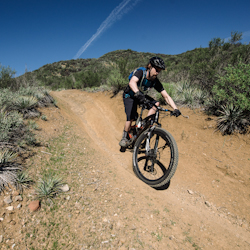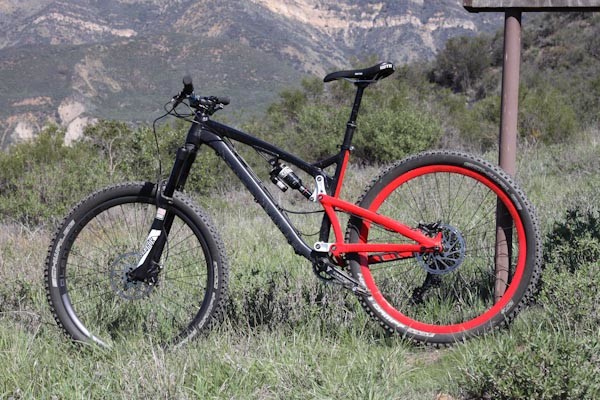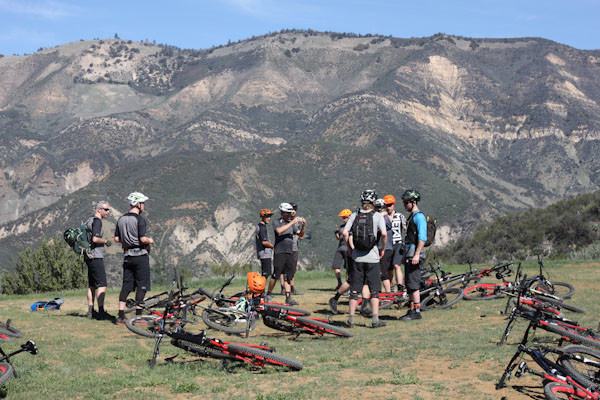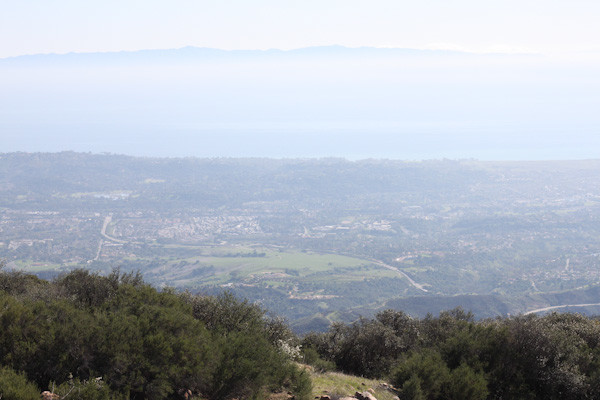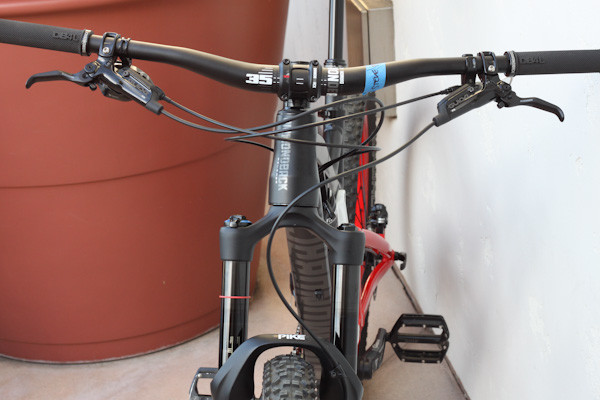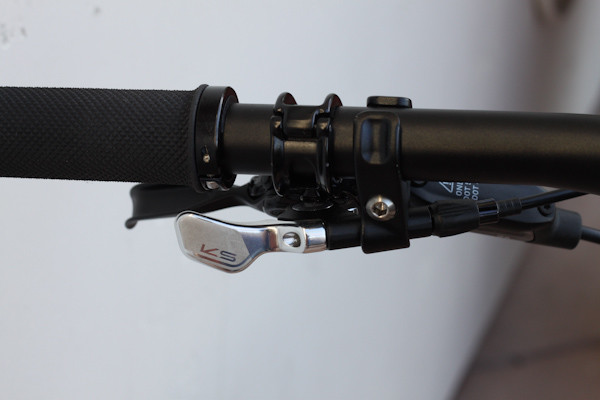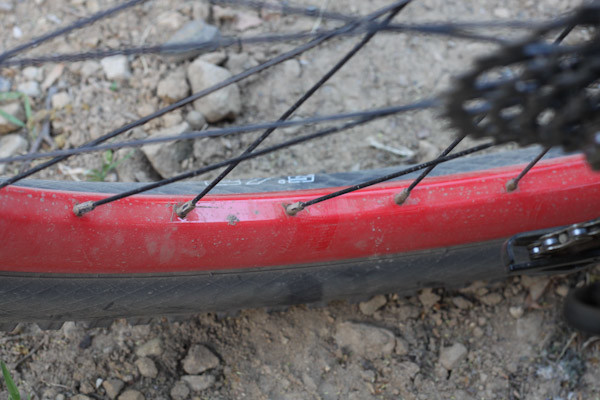When you’re looking out the window at snow, and you get an email asking if you’d like to go to California for the weekend, it’s a no brainer. Even if I didn’t get to ride a yet-unreleased bike with a new suspension design from Diamondback, I’d have gone to escape the British Columbian winter. My local trails are just beginning to clear up, so this was a great way to kick off the season and spread the news on these new bikes to Bikerumor’s readers.
There were only a few Catch 27.5+ bikes on hand, so based on my familiarities I went with the majority and hopped aboard a Release 3 27.5. In short, I agreed with much of what Diamondback had claimed about the bike. It climbed very well with good traction and almost no detectable pedal bob, and when we took to the downhill trail I found myself pinballing through nasty rock gardens with surprising confidence and stability…
This was my first time riding in Santa Barbara, and Diamondback’s crew picked two trails to show us what their new Level Link bikes can do. First we rode a lengthy XC trail called the Camuesa Connector that began with a challenging fire road climb, then followed up with some classic California down and up, down and up, and finally a bit of sustained descending at the end.
Next we took a long drive up a crazy mountain road in our party bus, which was using both lanes to negotiate the sharp, banked corners. That brought us to Romero Trail, a 2300ft descent that gets you going fast, then suddenly tosses you into big rock gardens with some not-so-obvious lines…a great way to put a bike through the torture test! As you’ll hear later, not every bike got out unscathed.
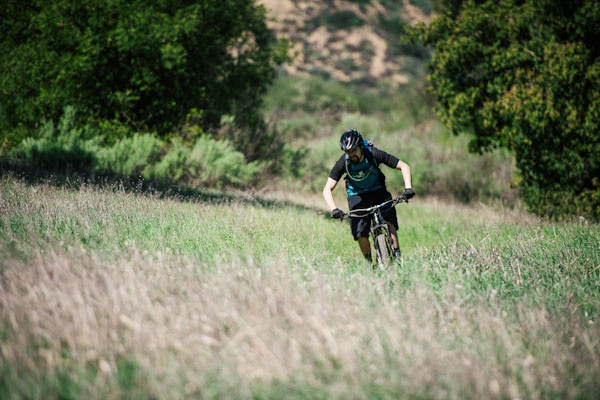
For the test ride I ran the shock and fork’s rebound in a middle position, and had my sag set at 30%. I generally kept the Rock Shox Monarch Plus RC3 Debonair’s 3 position switch in pedal mode for climbs and fully open for downs, but a few times I forgot to switch out of open mode when we got to pedalling sections. It seems like the frame design does the bulk of the work resisting pedal inputs, and the bike is probably not too reliant on a multi-position shock to provide excellent climbing properties. It never hurts though, and this was the top spec model so we got RockShox’s good stuff.
The Up(hill):
As promised, the Release pedals very well. I felt almost no bob when climbing in the saddle, and had to stand up and crank hard to generate any notable up and down motion. Rear wheel traction was great on smooth and rougher, looser patches, as I don’t remember peeling out once on any of the tougher fire road or singetrack bursts.
On the first climb we hit some really steep switchbacks that threatened to lift up my front tire. Despite the lengthy top tube the bike is equipped with a rather stubby 40mm stem and didn’t actually feel that long. If your area has lots of steep climbs a longer stem might be ideal to shift your weight over the front wheel a bit more, but aside from that I have no suggestions for improvement – this thing is a highly capable climber.
The Down(hill):
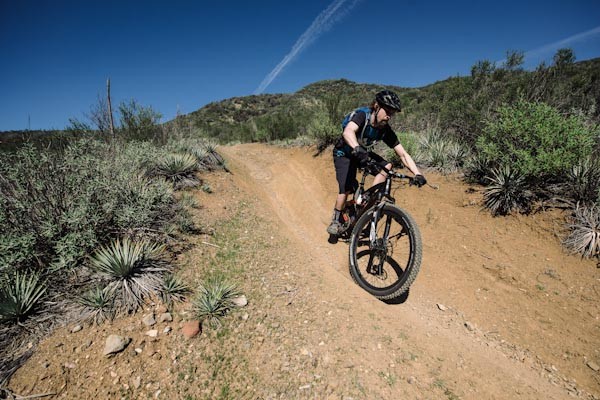
After our first loop I felt the Release’s small bump absorption was good but not anything ground breaking. I got a lot of feedback from the small chattery bumps on the Camuesa Connector’s loose, rocky and slightly eroded surfaces. I can’t say you can just sit back and glide over the trail like nothing’s there as tt still requires some physical effort to absorb the vibrations and keep yourself from bouncing off your line, but it certainly wasn’t bad compared to other shorter travel trail bikes I’ve ridden. It’s always important to note however, that this was after just two rides on a bike I had just met. As I note below, the suspension could still use some fine tuning which would likely improve the overall performance.
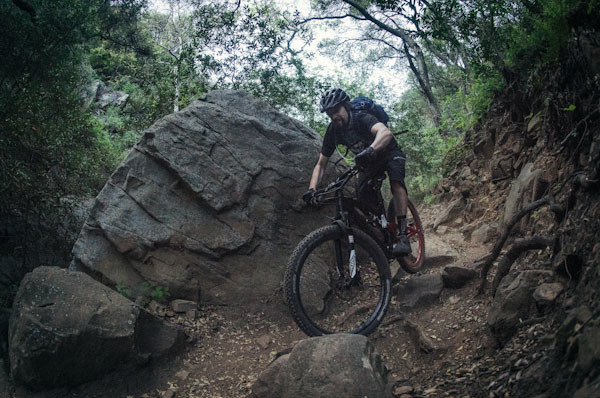
Big bump absorption was much more impressive. Tackling nasty rock gardens at high speed when descending Romero trail was surprisingly easy, which is good since they come at you with little warning! No doubt the longer 150mm fork helps, but to my delight the bike’s rear end tracked predictably and comfortably through some really rocky, highly technical patches. Furthermore, I realized I wasn’t quite hitting full travel, so in hindsight I could have run a bit less pressure in my shocks and the ride would have been even softer. In this scenario the Release outperformed similar travel bikes, and felt much more plush than you’d expect.
Components:
Since we were all riding the top-spec Release 3, it had some pretty nice components. The Sram Guide RS brakes were great, offering much more power than my own lesser-model Avids with similarly smooth modulation. The Sram X-1 drivetrain performed perfectly, and the Schwalbe Hans Dampf tires provided reliable grip on loose and packed surfaces.
Not everything was perfect, however. I liked the positioning of the Southpaw remote lever for the KS Lev Integra Dropper post, but the post itself got stuck several times. I had to knock it to make it rise right away, then a few more times along the ride, then once it didn’t fully extend and I had to lift it the last inch. At least one other rider had similar issues with their post as well.
The asymmetrical Blanchard rims took a bit of heat. Two riders put nasty dents in their rear rims, one of which was pretty severe and possibly beyond repair. To be fair, if this was going to happen anywhere it would likely happen in Romero trail, but I felt it was definitely worth noting.
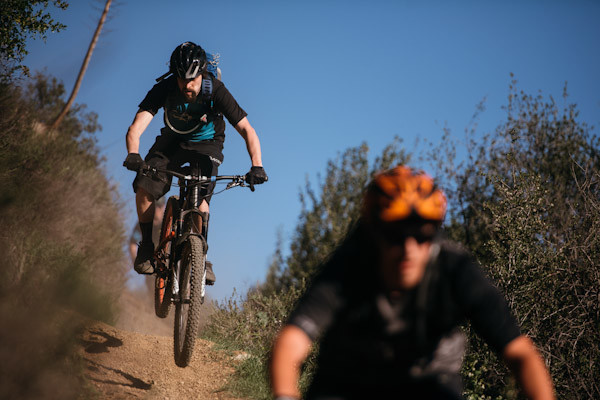
All in all the Release wowed me on two out of three counts, its only weak spot possibly being small bump absorption – which may or may not improve with more suspension tinkering. It sprints up hills like a billy goat and gobbles up huge rocks like an enduro bike should, which is a tough balance to achieve. I’d say Diamondback has attained their goal, and created a versatile trail bike that will put up a fight against any brand out there.
